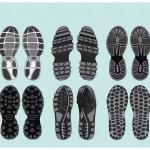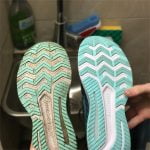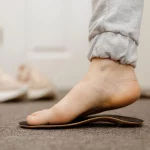Are you confused about the difference between running shoes and walking shoes? Lets me clear your dough. To get a good workout, you need great shoes. Lucky for you, we have a variety of walking, running, and training shoes.
Running and walking are very different activities and require your specialized footgear. Today we are going to go over what makes a shoe fall under a particular category and which kind is right for your activity level.
In this section, we will explore the benefits of running shoes and walking shoes. As a runner, you should understand the differences between running and walking shoes to get the right shoe.
Walking Shoes
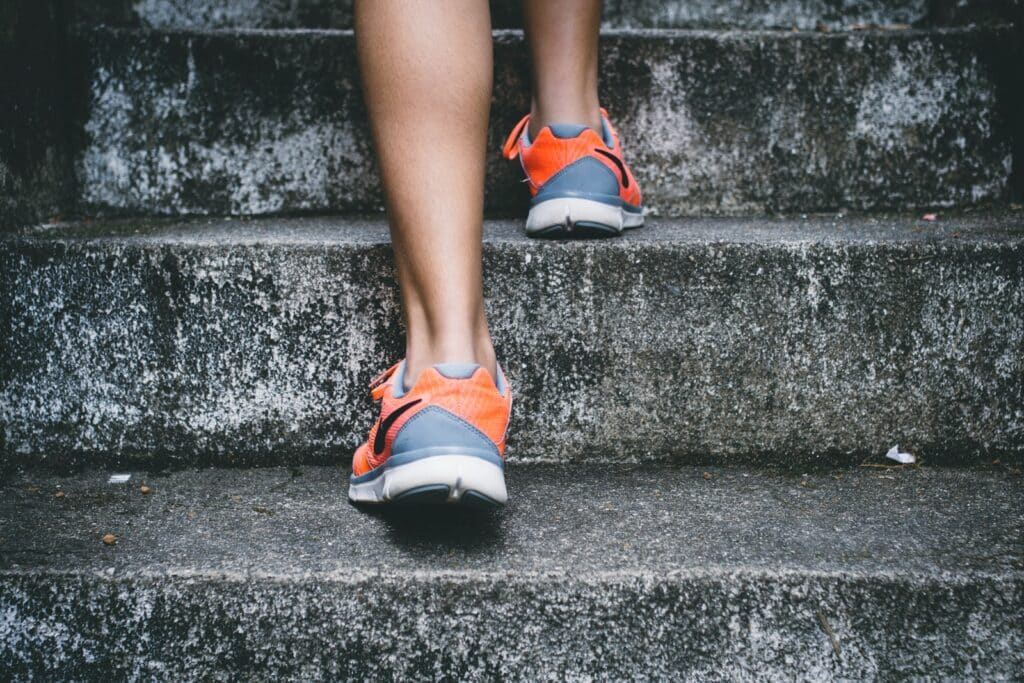
Because walking and running are similar activities, it’s easy to see why a lot of people think shoes are interchangeable. However, when you are walking, your weight gets distributed more evenly than when you are running. So walking shoes are designed with this in mind. In walking shoes, the sole has to absorb 1 to 1.5 times the weight of your body. In walking, the impact will be on foot in a rolling motion.
Fitness Walking shoes offer a more flexible sole, making it easier for you to walk upstairs, over curbs, and on uneven surfaces like gravel or grass. They are designed to provide stability but not as much as running shoes – they are heavier than running shoes, and they provide the right amount of support with more flexibility.
Running Shoes
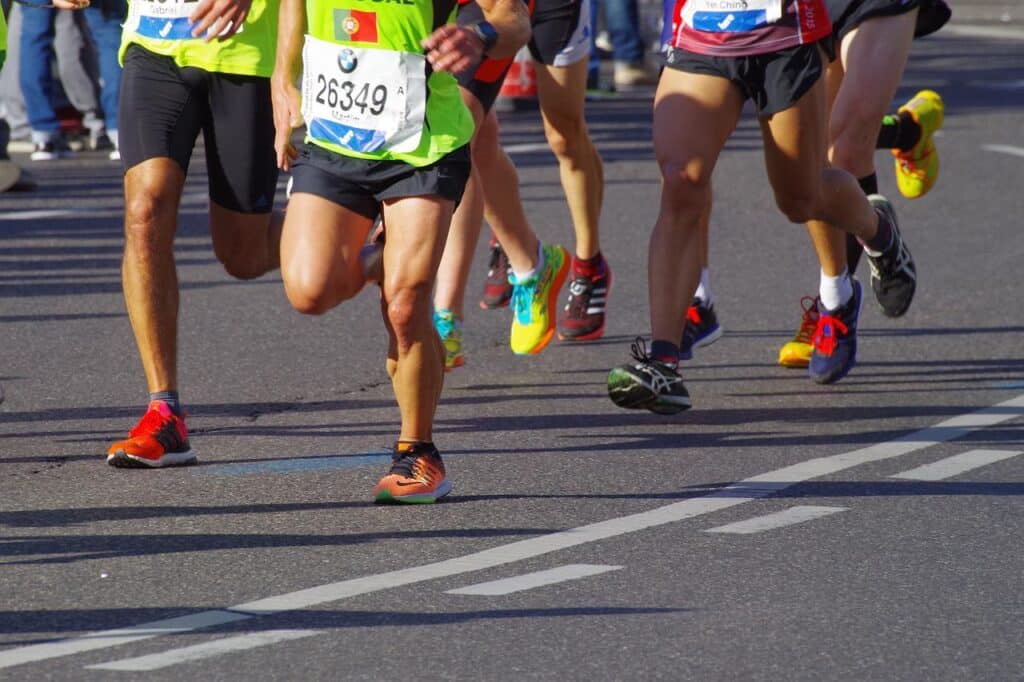
The running shoe has a narrower heel and a wider toe box. This is because the runner’s heel hits the ground first, and then the toes push off. The walking shoe has a wider heel and a narrower toe box. This is because the walker’s heel strikes the ground last, followed by toes pushing off from the ground.
The running shoes have been designed for comfort, performance, and injury prevention. In contrast, walking shoes have been designed for stability and cushioning to avoid foot fatigue after long hours on your feet.
Running shoes need to be lighter in weight as they need to provide enough cushioning for each step but at the same time not too heavy so they can keep their speed up when it comes to racing or training. Walking shoes need more weight on them, specifically in
The first step to buying running shoes is to understand your gait. In running shoes, the sole has to absorb 2 to 3 times the weight of your body with every stride.
In Running, the impact will be directly on the knees and heels. Your gait is defined by how your foot comes in contact with the ground during the strip.
You can check your gait by using the wet foot test. Get your bare foot wet, then step onto a piece of paper and look at your footprint. If you see a lot of your footprint, then you want to look for a shoe with more stability.
If you only see a little bit of your footprint, give lightweight or more flexible shoes to try. If you see a classically shaped footprint, you are a neutral runner with a more centralized balanced.
Cushioning shoes are great for those with a neutral stride. Running shoes also tend to be made with more mesh. This keeps your feet cool while you are going for the mile.
The Basic Difference Between Running And Walking Shoes
Running shoes are designed to protect the foot and allow the runner to run fast. These are designed to be worn while running. Running shoes are usually made from soft and flexible materials like rubber, so they conform well to the foot. The main purpose of a running shoe is to provide support for the foot during the gait cycle.
Walking shoes are designed to protect the foot and allow the walker to walk comfortably. They are usually made from hard and rigid materials like leather, so they do not conform to the foot. Walking shoes are designed to support the foot but not to help the foot move as quickly as possible.
Running VS Walking Shoes
| Running Shoes | Walking Shoes | |
|---|---|---|
| Support and Cushioning | More | Less |
| Sole | Thicker and heavily cushioned | Thinner and less cushioned |
| Additional features | The heel counter, flexible forefoot | May have a rigid heel counter and forefoot |
| Activity | High-impact | Low-impact |
| Toe box | May be narrower | May be wider |
| Running Shoes | Walking Shoes |
|---|---|
| More support and cushioning | Less support and cushioning |
| Thicker, heavily cushioned sole | Thinner, less cushioned sole |
| Additional features such as heel counter | May have a more rigid heel counter |
| More flexible forefoot | More rigid forefoot |
| Designed for high-impact activity | Designed for low-impact activity |
Things To Keep In Mind
1. Flexibility
One of the key differences between a running shoe and a walking shoe is how flexible it is. In the shoe world, shoes that aren’t flexible can not be bent.
Usually, you should always go with flexible shoes because of the comfort they provide your feet. They bent according to the movement of your feet in them.
However, while most good shoes are flexible, the part that flexes is essential and becomes what differentiates running shoes from walking shoes.
Recommendation:
Push down with the toe of the shoe and see where the shoe twists. Best running shoes should flex at the forefoot, as walkers should push off with their toes.
A shoe that curves at the curve doesn’t give the stage they need. A shoe that doesn’t twist at everything is unsuitable.
Many shoes promoted as strolling shoes don’t flex by any means. They are unsatisfactory for wellness strolling.
2. Cushioning
Cushioning provides padding and comfort for feet. The level of cushioning needed for a running shoe is different from the level of cushioning needed for a walking shoe.
This means that as a runner, you need a lot of cushioning to keep your legs comfortable and protect them from injuries.
The case is different for a walking shoe, where your impact on the ground is just 1.5 of your body weight.
Recommendation:
Decide on a lighter shoe that actually gives sufficient padding, so your feet and legs don’t fondle beat from the effect after a long walk.
Assuming you intend to walk in excess of six miles all at once, investigate padded running shoes. However, pick ones that meet different measures for great strolling shoes.
For instance, Brooks Glycerin shoes are lightweight yet padded shoes that function admirably for strolling longer distances, like a half-long distance race.
3. Heel Thickness
Otherwise known as heel height, heel thickness is one feature that differentiates walking shoes from running shoes.
Runners seek stability from their shoes as their foot strikes the ground, and they get this stability from a built-up heel.
In a walker’s shoe, the heel height isn’t that much because of the impact you make on the ground, and its response on your feet is not as huge as the one in running sneakers.
Recommendation:
Choosing running shoes with minimal contrast in the range from the heel through the toe is advisable. This is called heel drop, and frequently you can think that it is recorded on the shoebox in millimeters.
It’s underhanded to attempt to appraise it by taking a gander at the shoe’s external sole. Some might seem to have a higher impact point, yet the impact point of your foot really sits lower inside the shoe.
Best to buy shoes with a heel drop of under 8 millimeters.
4. Weight
This might be a shocker to you because you never think weight should be a differentiating factor. This is because you have seen running shoes that are heavy and walking equally heavy shoes.
On the other hand, weight isn’t much of a concern to walkers compared to runners. However, this does not mean walking shoes should be heavy.
What I am saying is that they are less lightweight than runners. However, this does not mean walking shoes should be heavy. What I am saying is that they are less lightweight than runners.
5. Support
While I know, it is hard to generalize in this context, the support walking shoes provide can also be used to differentiate them from running shoes.
Because of the nature of the runner’s sneakers, they bounce when they hit the ground. However, walking shoes aren’t made to bounce in such a way.
They are made stiffer and provide you with good comfort when you land instead of bouncing you back. Generally, each had been designed to provide support for the activities it is meant for.
I am sure you have seen there’s more to just calling a shoe an athletic shoe. While some can help you run, others are only good at giving you a comfortable feel and making it easy for you to walk.
Walking Shoe Buying Guide
When buying walking shoes, it’s essential to consider a few key factors to ensure that you get the right shoes for your feet and your needs. Here are some tips to keep in mind when shopping for walking shoes:
- Fit: Walking shoes should fit snugly but not too tightly. The shoes should be comfortable right out of the box and should not require a break-in period. Make sure that there is enough room in the toe box for your toes to move comfortably and that the shoes do not pinch or rub anywhere.
- Support: Walking shoes should provide ample support for your feet and ankles. Look for shoes with a sturdy, rigid heel counter that helps to prevent the foot from rolling too far inward, as well as a sturdy, flexible forefoot that allows for a natural range of motion.
- Cushioning: Walking shoes should have a comfortable, cushioned sole that helps absorb each step’s impact. Look for shoes with a thick, high-quality insole that provides ample cushioning for your feet.
- Breathability: Walking shoes should be made from breathable materials that allow air to circulate and keep your feet cool and dry. Look for shoes with mesh panels or other breathable materials to help keep your feet comfortable during long walks.
- Style: Finally, consider the style of the walking shoes. Walking shoes come in a wide range of styles and colors, so you can choose a pair that matches your personal taste and style. Look for shoes that are comfortable and functional but also stylish and fashionable.
Running Shoe Buying Guide
When buying running shoes, it’s important to choose a pair that is specifically designed for running. Running shoes are different from regular walking shoes in several key ways, so it’s important to know what to look for when shopping for running shoes. Here are some tips to keep in mind when buying running shoes:
- Fit: Running shoes should fit snugly, but not too tightly. The shoes should be comfortable right out of the box, and should not require a break-in period. Make sure that there is enough room in the toe box for your toes to move comfortably, and that the shoes do not pinch or rub anywhere.
- Support: Running shoes should provide ample support for your feet and ankles. Look for shoes with a sturdy, flexible heel counter that helps to prevent the foot from rolling too far inward, as well as a sturdy, flexible forefoot that allows for a natural range of motion.
- Cushioning: Running shoes should have a comfortable, heavily cushioned sole that helps absorb each step’s impact. Look for shoes with a thick, high-quality insole that provides ample cushioning for your feet.
- Breathability: Running shoes should be made from breathable materials that allow air to circulate and keep your feet cool and dry. Look for shoes with mesh panels or other breathable materials to help keep your feet comfortable during long runs.
- Style: Finally, consider the style of the running shoes. Running shoes come in a wide range of styles and colors, so you can choose a pair that matches your personal taste and style. Look for shoes that are comfortable and functional, but also stylish and fashionable.
Conclusion
Running shoes are specifically designed to provide a level of support that is best suited for the runner’s needs. These types of shoes have a higher heel-to-toe drop which makes them heavier. Running shoes also have more cushioning and less support to promote natural pronation.
Walking shoes are designed with a lower heel-to-toe drop, making them lighter than running ones. Walking shoes have more support and less cushioning to promote natural supination.
Walking or running is necessary to keep you healthy and fit. Yet knowing the characteristics of the right shoe can improve each progression.
Pay special attention to an agreeable fit, the right padding, and a shoe that allows your foot to inhale — you’ll put in any amount of work glad feet the entire way.
In conclusion, if you run long distances or do any other sport requiring continual motion, you should go for running shoes because they are much better.
FAQs
Is It Ok To Wear Running Shoes For Walking?
It is generally okay to use running shoes for walking as long as they fit well and are comfortable. However, it’s important to note that running shoes are designed for a higher-impact activity and may not provide the same level of support and cushioning as walking shoes. If you do use running shoes for walking, you may need to replace them more frequently than you would if you used a dedicated pair of walking shoes. It’s always a good idea to have a separate pair of shoes for each activity to ensure that your feet are properly supported and comfortable.
Can We Use Running Shoes For Daily Use?
Running shoes can be used daily as long as they fit well and are comfortable. However, it’s important to note that running shoes are designed for a specific purpose and may not provide the same level of support and cushioning as shoes designed for everyday use. If you do use running shoes for daily activities, you may need to replace them more frequently than you would if you used a dedicated pair of shoes for everyday wear. It’s always a good idea to have a separate pair of shoes for each activity to ensure that your feet are properly supported and comfortable.
What Happens If You Wear Running Shoes All The Time?
If you wear running shoes all the time, the shoes may wear out more quickly and may not provide the same level of support and cushioning as they did when they were new. This can lead to discomfort, foot pain, and other problems.
When Should You Throw Away Shoes?
There are a few signs that it’s time to throw away your shoes and get a new pair. Here are some things to look for:
The shoes are starting to feel uncomfortable or painful to wear. This could signify that the shoes have lost their support and cushioning or that they no longer fit properly.
The shoes are visibly worn or damaged. If the shoes show excessive wear, such as holes in the sole or tears in the upper, it’s time to replace them.
The shoes are no longer providing the support and protection you need. If you are experiencing foot, ankle, or leg pain, or if you notice that your feet are getting injured more efficiently, it could be a sign that your shoes are no longer providing the support and protection they should.
The shoes are more than a year old. Even if the shoes are still in good condition, it’s a good idea to replace them every year to ensure that you have shoes that provide the support and cushioning you need.
In general, if your shoes are uncomfortable, worn out, or no longer providing the support and protection you need, it’s time to replace them.
Are Running Shoes Good For Walking On Concrete?
Running shoes can be suitable for walking on concrete as long as they fit well and are comfortable. Running shoes are designed for high-impact activities, so they typically provide ample support and cushioning for the feet and ankles. This can help walk on concrete, which can be complex and unforgiving on the feet.
Michel's passion for shoes and flowers is evident in his acclaimed "Shoe Fleur" photography series, which features shoes transformed into stunning floral arrangements. His work has been exhibited in galleries and museums around the world, including the International Center of Photography in New York City and the Maison Européenne de la Photographie in Paris.
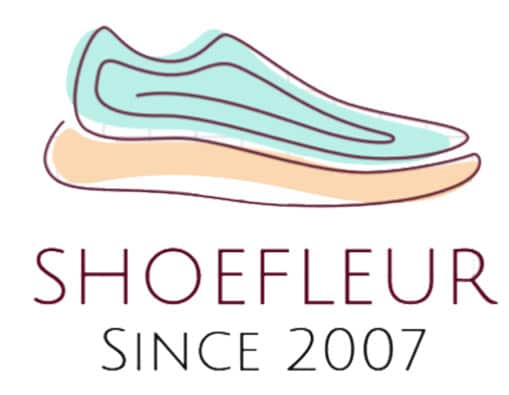


![10 Most Comfortable Clear Heels [year] 2 10 Most comfortable clear heels](https://shoefleur.com/wp-content/uploads/2023/06/Most-comfortable-clear-heels-150x150.jpg)
![20 Sole Types For Shoes and Boots You Need to Know [year] 3 Different Types of Soles for Shoes](https://shoefleur.com/wp-content/uploads/2022/07/Different-Types-of-Soles-for-Shoes-150x150.png)
![Best Beach Sandals & Flip-Flops For Women [year] 4 Best beach sandals for women](https://shoefleur.com/wp-content/uploads/2023/05/Best-beach-sandals-for-women-150x150.png)
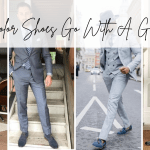
![Asics Gel Venture 7 VS 8: Comparison [year] 6 Asics Gel Venture 7 VS 8](https://shoefleur.com/wp-content/uploads/2023/06/Asics-Gel-Venture-7-VS-82-150x150.png)
![The 7 Best Heels For Flat Feet: Heels Review [year] 7 best heels for flat feet](https://shoefleur.com/wp-content/uploads/2023/05/best-heels-for-flat-feet-150x150.webp)

![10 Best Heels For Wide Feet In [year] That Are Trendy And Classy 9 10 Best heels for wide feet](https://shoefleur.com/wp-content/uploads/2023/05/Best-heels-for-wide-feet-150x150.jpg)
![Best Heels For Plus Size Ladies in [year] 10 best heels for plus size ladies](https://shoefleur.com/wp-content/uploads/2023/05/best-heels-for-plus-size-ladies-150x150.jpg)
![10 Best Walking Shoes for Overweight Men in [year] 11 best walking shoes for overweight men](https://shoefleur.com/wp-content/uploads/2023/05/best-walking-shoes-for-overweight-men-150x150.jpg)
